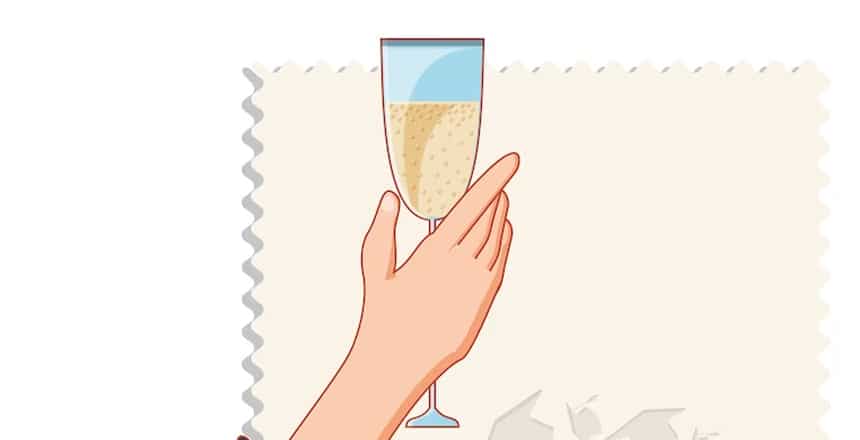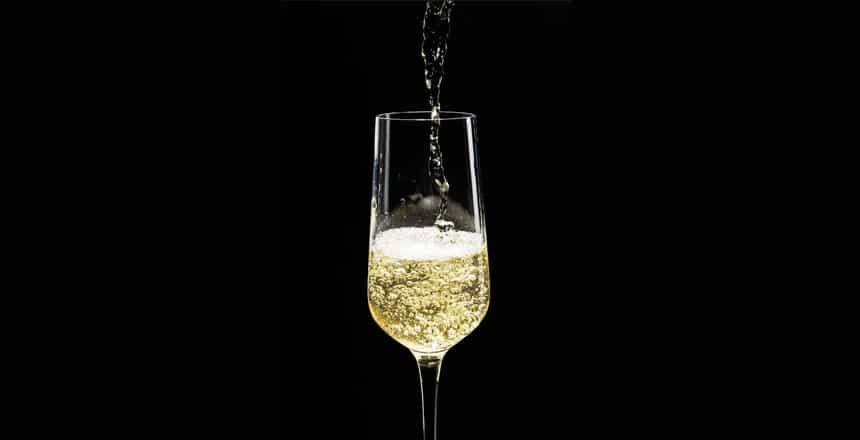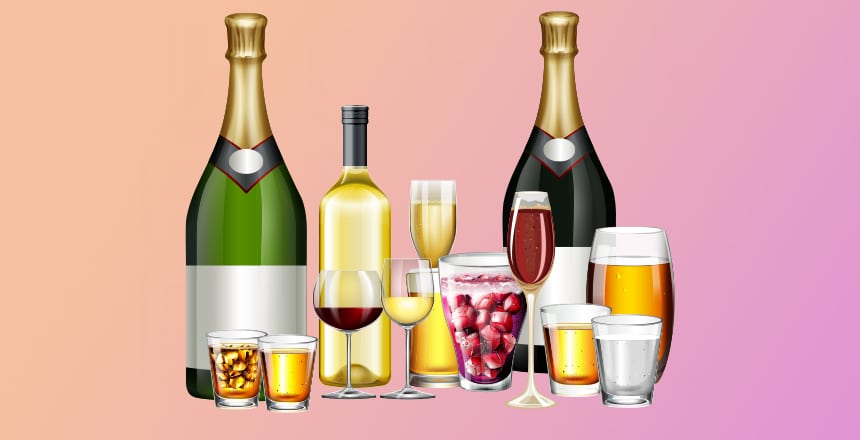Have you ever gone to a special celebration, such as New Year’s Eve or an anniversary dinner, and pulled out a bottle of Champagne? For many people, the occasion is made complete with the popping of the cork.
But in terms of alcohol content – exactly how much alcohol is included in that bubbly glass full of cheer? In this blog post, we will dive deep into what makes up champagne and its corresponding alcohol content – so grab a glass of your favorite sparkling beverage, and let’s find out some fizzy facts.
Related:
- Is Champagne Gluten Free
- What Is Vermouth And What Does It Taste Like
- Does Champagne Go Bad
- How Many Liters Are in a Bottle of Wine
- What is Sweet White Wine
- What is The Difference between White Wine Vinegar and White Vinegar
- How To Make Wine From Grapes
Contents
What is Champagne Made Of?
Champagne refers to a kind of bubbly wine produced from particular types of grapes that are cultivated in the Champagne area of France. Pinot Noir, Pinot Meunier, and Chardonnay are the three primary grape varieties utilized in the production of Champagne.
Champagne undergoes a secondary fermentation in the bottle, creating bubbles. A mixture of sugar and yeast is added to the wine, and the yeast consumes the sugar, producing carbon dioxide. The wine is aged on the lees to develop its unique yeasty, bready flavor. Champagne is made from a blend of three grape varieties.
How Much Alcohol Is in Champagne?

The alcohol content in Champagne typically ranges from 11% to 12.5%, with the most common being around 12%. However, the actual alcohol content can vary depending on the specific Champagne producer and the style of Champagne being produced.
Champagne is a wine that is produced using specific grape varieties and fermentation methods, which can affect the final alcohol content. Additionally, the level of sugar added during the dosage step, which determines the level of sweetness in the Champagne, can also impact the alcohol content.
What Causes Champagne’s Alcohol Content and Bubbles?

Champagne’s alcohol content is a result of the fermentation process.
During the first fermentation, the yeast does consume some of the sugar in the grape juice, but it is not uncommon for the alcohol content to reach 9% and has few bubbles.
The second fermentation in the bottle is what creates the bubbles in Champagne, and the amount of sugar and yeast added to the wine can affect the amount of carbon dioxide produced during this process and increases the alcohol content in the bottle, which can reach 12%.
Does Drinking Champagne Get You Drunk?
Yes, drinking Champagne can get you drunk.
Champagne typically has an alcohol content of around 12%, similar to many other types of wine.
The bubbles in your drink can contribute to faster absorption of alcohol into your bloodstream. This is because the carbonation from the bubbles can increase the rate of alcohol absorption, allowing it to enter your bloodstream more rapidly than it would with a non-carbonated drink.
However, it is important to note that the amount of alcohol consumed is still the primary factor in determining how drunk you become. Other individual factors such as age, weight, and tolerance to alcohol also play a significant role.
Compared To Other Alcohol/Alcohol in Champagne vs. Other Drinks
Wine
The alcohol content in Champagne is similar to that of most wines. The alcohol content of wine can vary depending on the type of wine and how it is made, but it generally falls within the range of 11-14%.
Some wines, such as fortified wines like Sherry or Port, can have a higher alcohol content, sometimes reaching up to 20%. However, the alcohol content of Champagne, which is typically around 12%, is comparable to that of many wines.
Beer
Compared to beer, Champagne generally has a higher alcohol content. The alcohol content of beer can vary widely, ranging from less than 3% to more than 10%, but most beers fall within the range of 4-6% alcohol by volume (ABV). In contrast, Champagne typically has an alcohol content of around 12%.
This means that Champagne contains almost twice as much alcohol as a typical beer, which can make it easier to become intoxicated if consumed in large quantities.
Vodka
Champagne generally has a lower alcohol content. Vodka is a distilled spirit that typically contains around 40% alcohol by volume (ABV), which is significantly higher than the alcohol content of Champagne, which is typically around 12%.
This means that vodka is more potent than Champagne and can have a stronger effect on the body if consumed in large quantities. However, it’s important to note that the amount of alcohol consumed is the primary factor in determining how drunk one becomes, regardless of the type of drink.
Sparkling Wine
Sparkling wine and Champagne have similar alcohol contents, as they are both carbonated wines produced using the same methods.
The alcohol content of sparkling wine can vary depending on the type of wine and how it is made, but it generally falls within the range of 10-13%. This is similar to the alcohol content of Champagne, which is typically around 12%. While the two drinks may have slight differences in taste and production methods, their alcohol content is relatively similar.
How Many Calories Are in a Glass of Champagne?
The number of calories in a glass of Champagne can vary depending on the size of the glass and the specific type of Champagne. On average, a standard 5-ounce (150-milliliter) glass of Champagne contains around 100-120 calories. However, a larger glass or a sweeter Champagne may contain more calories.
Additionally, the calorie count can also be affected by the residual sugar content of the Champagne, with sweeter Champagnes containing more calories than drier ones. It’s worth noting that while Champagne is a relatively low-calorie alcoholic beverage, the addition of mixers or the consumption of multiple glasses can quickly add up to a significant number of calories.
FAQs
Is Champagne A Lot Of Alcohol?
Champagne typically has an alcohol content of around 11-13%, with an average of about 12%. This is slightly lower than the average alcohol content of red wine, which is around 12.5%.
How Much Alcohol Is In 4 oz of Champagne?
Assuming an average alcohol content of 12%, 4 oz of Champagne would contain approximately 0.48 oz of alcohol, which is equivalent to 14.1 milliliters or about 0.8 units of alcohol.
Is Champagne a Healthy Alcohol?
Moderate consumption of Champagne may have health benefits due to the antioxidants in the grapes, which may have anti-inflammatory effects and protect against cardiovascular disease. However, overconsumption can quickly negate any potential benefits and pose health risks.
Why Does Champagne Make You So Drunk?
The carbonation in Champagne can cause the alcohol to be absorbed more quickly into the bloodstream, which can contribute to feeling drunk faster than with other alcoholic drinks.
Can You Get Champagne Without Alcohol?
Yes, there are non-alcoholic versions of Champagne available on the market, which are sometimes referred to as “alcohol-free” or “dealcoholized” Champagne.
Conclusion
Champagne is a delicious and enjoyable beverage that can enhance any occasion. While some may be intrigued by its bubbles, others may appreciate its low-alcohol content. By understanding the levels of alcohol present in Champagne, we’re able to make informed decisions about how much to drink and enjoy responsibly.
Moreover, Champagne can be enjoyed as an alternative to other alcoholic drinks as it contains fewer calories than most and has the potential to get you drunk if consumed in large quantities – so drink responsibly.
